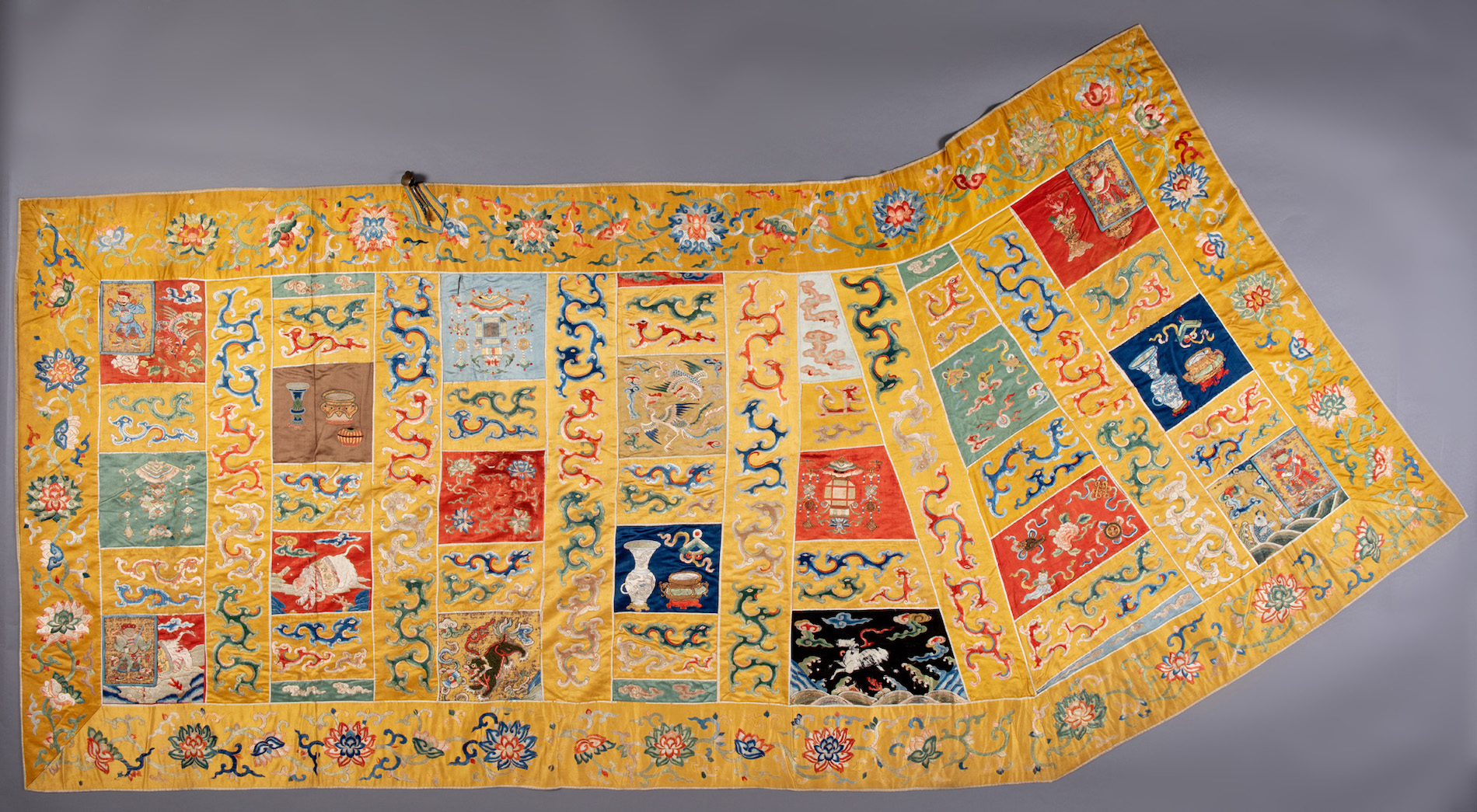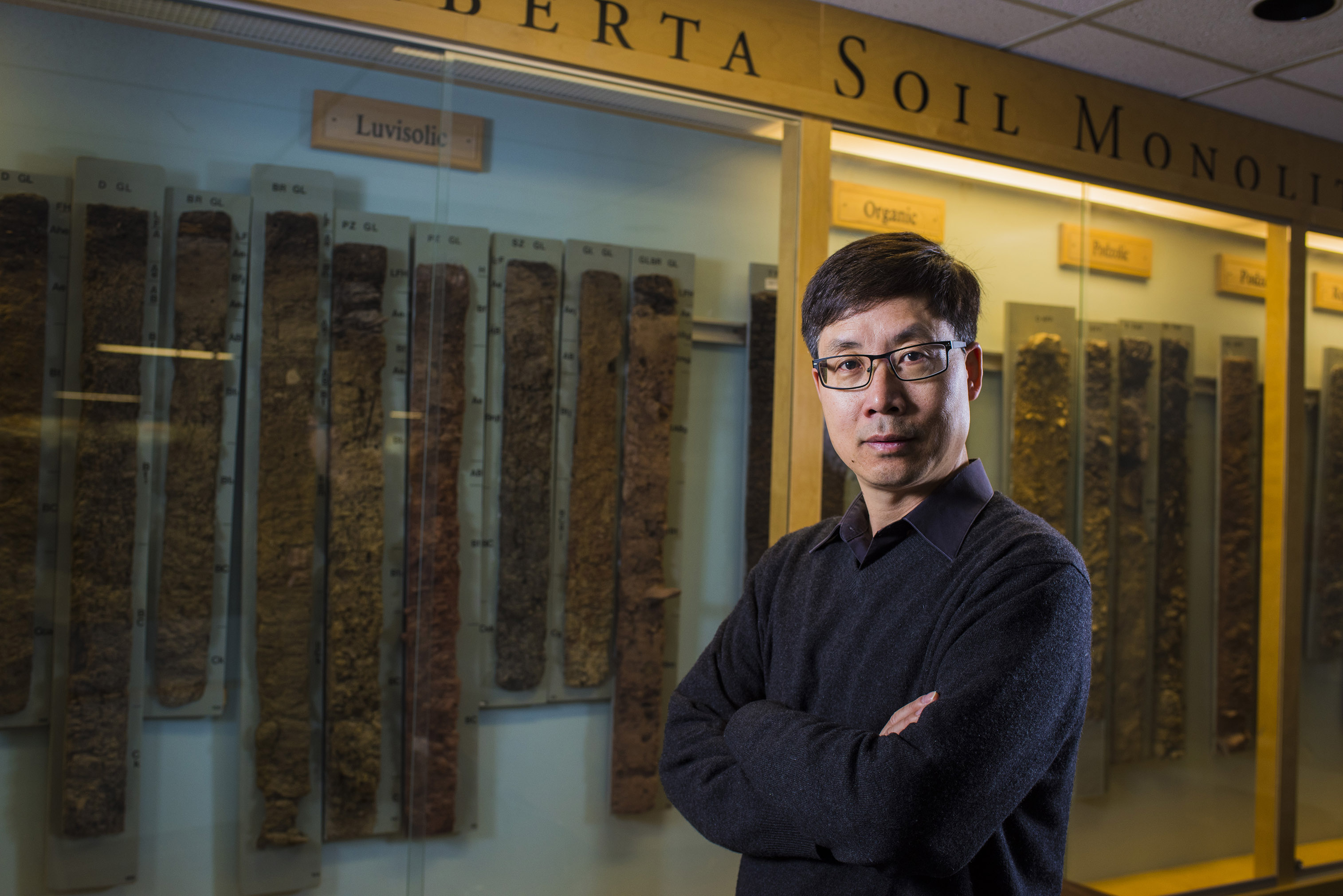Creating Lion, Lantern, Lotus - A UAM Summer Internship Perspective

“Embroidered Silk Buddhist Priest Robe,” 1662-1722; Mactaggart Art Collection; Gift of Sandy and Cécile Mactaggart; 2005.5.393
As the 2021 Summer Intern for the University of Alberta Museums (UAM), I am pleased to share my research experience on developing an online exhibition with the Mactaggart Art Collection called Lion, Lantern, and Lotus: Chinese and Buddhist Symbols in the Mactaggart Art Collection.
The online exhibition development project was part of the process of experiencing all areas of museum practice during the 2021 UAM Student Internship. The ability to create an entire exhibition is a rare opportunity for an undergrad student. With the University of Alberta Museums staff, I learned how to create an exhibition project plan and dove into curating an online exhibition with high hopes. As my personal and academic interests lie with East Asian and Buddhist art, I enjoyed the opportunity to work with the Mactaggart Art Collection and its Buddhist textiles.
The textile selected for the online exhibition Lion, Lantern, and Lotus: Chinese and Buddhist Symbols in the Mactaggart Art Collection was the Embroidered Silk Buddhist Priest Robe. It is a yellow rectangular silk textile on which many square patches bearing various symbols are patched together in seven columns. Sinuous, thin dragons embellish the spaces between columns and patches, and lotuses decorate the edges.
Just like in any research, for personal or for academic purposes, I learned that an exhibition idea starting from big questions or big words helps launch the process. In this case, as I was curious about the Buddhist robe made in 17th century China, I began by searching for information regarding Buddhist robes—history of Buddhist robes, differences that may exist within various countries, its designs and typical usages, etc. While I am familiar with Buddhism due to my family’s religious background, if I were unfamiliar with the religion I would have started by researching the term “Buddhism.”
Thanks to Isabel (Pi-fen) Chueh and Sarah Spotowski, Curator and Curatorial Assistant of the Mactaggart Art Collection, respectively, I had plenty of source materials. I had an assumption that the symbols on the selected robe would have a huge role to play in determining the textile’s religious significance. Thus, I dove into the question of “what makes textiles Buddhist?” to understand how this specific textile differs from other non-Buddhist textiles. However, as I learned more about Buddhist textiles and its design, my assumption was proven wrong. While symbols denote Buddhist associations, the patchwork design of the textiles is what distinguishes a textile or a garment as primarily Buddhist.
Most Buddhist mantles or robes made in various East Asian countries follow the original patchwork layout coming from ancient India, rectangular pieces of cloth made with discarded fabric patches stitched together.1 So, as it was mainly the style that signified the Buddhist use of the textile, I tweaked the research question into “what makes Buddhist textiles Chinese?” to highlight the unique feature of the selected robe—its Chinese context.
At the suggestion of my project supervisor, Jill Horbay, Communications and Marketing Manager at the UAM, I researched symbols on the selected 17th century Chinese Buddhist priest robe and learned that many symbols on the robe have Buddhist meanings within a Chinese context, and that many or most of the symbols stem from Chinese culture. A few symbols selected to introduce the Embroidered Silk Buddhist Priest Robe are: lion, lantern, and lotus.

The whole online exhibition development, from research and story development to the actual website design and development, took several months in preparation. What should be properly acknowledged in this process is the support from the many experienced UAM staff and the availability of resources both in the university’s physical collections and online databases. I hope that you can enjoy this online exhibition as we are all excited to share the stories and meanings embedded on the Embroidered Silk Buddhist Priest Robe!
Come check out the meanings of the symbols on the robe in Lion, Lantern, Lotus: Chinese and Buddhist Symbols in the Mactaggart Art Collection and learn more about the symbols and the Buddhist robes of 17th century Qing China!
1 See Vollmer and Thierry 113-141, Rutherford introduction, Vollmer et al. chapter 1, and McArthur for details.
Works Cited: (cited in MLA 8th Edition)
McArthur. Meher. “Kesa: Robes of Patched Perfection.” Buddhistdoor Global, 18 July. 2018, https://www.buddhistdoor.net/features/kesa-robes-of-patched-perfection. Accessed 26 July 2021.
Rutherford, Judith, and Jackie Menzies. Celestial Silks: Chinese Religious & Court Textiles. Art Gallery of New South Wales, 2004.
Vollmer, John, et al. Emblems of Empire: Selections from the Mactaggart Art Collection. 1st ed., University of Alberta Press, 2009.
Vollmer, John, and Thierry Prat. Silks for Thrones and Altars: Chinese Costumes and Textiles: From the Liao through the Qing Dynasty. Myrna Myers, 2003.



